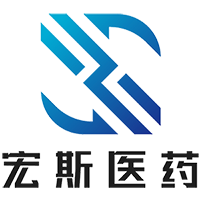Tetrabutylammonium Iodide (TBAI) is a chemical compound with the CAS number 311-28-4. It has gained significant attention in recent years due to its potential as a promising agent in advanced material design. With advancements in material science, the search for new and improved materials is ongoing, and TBAI has emerged as an influential player in this domain.
TBAI possesses remarkable properties that make it a valuable component in the creation of innovative materials. One of its key characteristics is its ability to act as a phase-transfer catalyst. This means that it facilitates the transfer of materials between different phases, such as solids and liquids, allowing for easier synthesis and manipulation of materials. This property is particularly useful in the design of advanced materials, where precise control over the composition and structure is essential.
Another notable property of TBAI is its high solubility in various solvents, including organic solvents. This solubility makes it an ideal candidate for use in solution-based fabrication techniques, such as spin coating and inkjet printing. By incorporating TBAI into the solution, researchers can enhance the performance and functionality of the resulting materials, opening up new possibilities for their application in various industries.
Furthermore, TBAI exhibits excellent thermal stability, which is crucial in materials intended for high-temperature applications. Its ability to withstand high temperatures without decomposing or losing its efficacy makes it an attractive option for the development of advanced materials that can withstand extreme conditions. This property also allows for the creation of materials with enhanced durability and longevity, contributing to their overall performance and value.
In terms of applications, TBAI has found use in a wide range of fields within advanced material design. One such area is energy storage, where TBAI has been utilized in the development of high-performing batteries and supercapacitors. Its ability to enhance charge transfer kinetics and electrolyte stability has led to significant improvements in the energy storage capacity and efficiency of these devices. This, in turn, has paved the way for the production of more reliable and sustainable energy storage solutions.
TBAI has also been employed in the fabrication of advanced electronic devices and sensors. Its role as a phase-transfer catalyst and its solubility in organic solvents enable the creation of thin films and coatings with excellent electrical properties. These materials can be used in the production of flexible and stretchable electronics, as well as in the development of high-performance sensors for various applications, including healthcare and environmental monitoring.
In conclusion, Tetrabutylammonium Iodide (TBAI) holds great promise as a key player in advanced material design. Its remarkable properties, such as its phase-transfer catalytic ability, solubility in various solvents, and thermal stability, make it an attractive choice for researchers and engineers in the pursuit of developing innovative materials. The wide range of applications of TBAI, including energy storage and electronics, further highlights its potential as a valuable component in cutting-edge technologies. As material science continues to evolve, it is exciting to witness the ongoing advancements enabled by TBAI, paving the way for the development of materials with enhanced performance and functionality.
Post time: Oct-09-2023




